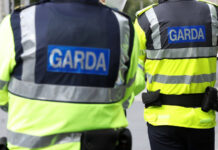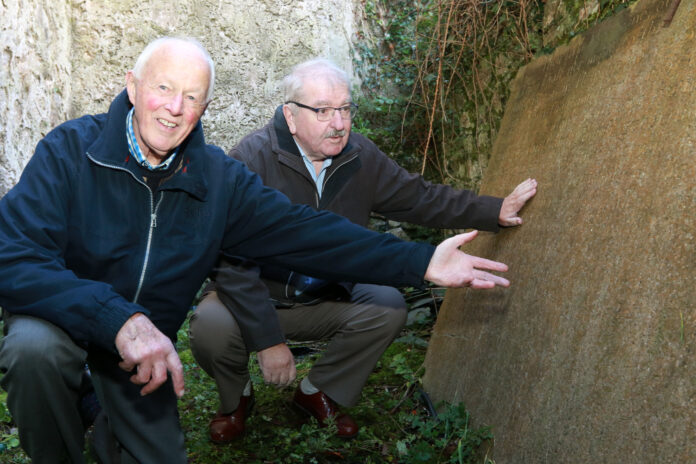
THE Ten Commandments were never supposed to be a recommendation. If they were, they would more than likely have been called the Ten Suggestions.
Of course in today’s permissive society they are often an afterthought or, in the best-case scenario, something that is considered with light modifications here and escape clauses there.
But when the call came into the Limerick Post office recently from a local councillor well capable of preaching hellfire and brimstone that two large stone slabs etched with the moral code for Christian society had been discovered in Askeaton, we knew we had a story of biblical proportions on our hands.
Fianna Fáil councillor and former Limerick mayor Kevin Sheahan, the man who tried to stop heavy metal satanist rockers from performing in King John’s Castle a number of years back, has had his own Mount Sinai moment.
The larger than life character known for preaching the epistles to the management of Limerick City and County Council is on a mission to put us all on the straight and narrow.
The dynamic duo
When this reporter arrived out in Askeaton to meet the West Limerick prophet and his disciples, there was a right flurry of excitement in the old tourist office building – now home to Askeaton Civic Trust.
Pots of tea were brewing, sandwiches were cut into triangles, and plates of pastries too dainty to eat were spread out for the offering at this revelatory occasion.
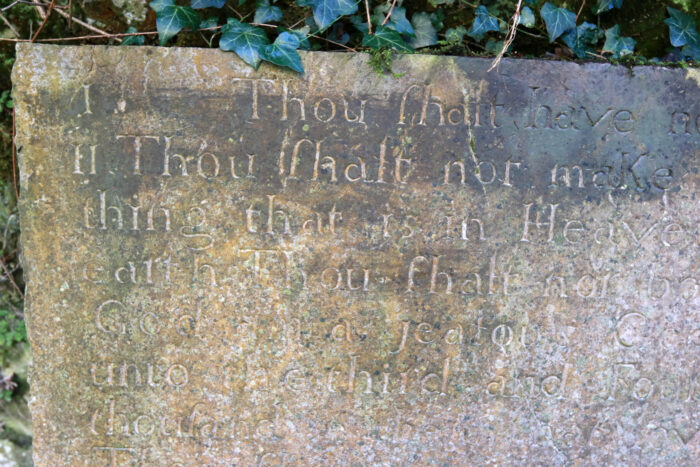
Leading his flock up the road to St Mary’s Church of Ireland, where the Ten Commandments were found on two large stones, Cllr Sheahan set the scene for a show of hallowed proportions.
Also in tow, energetic and sprightly local tourist guide Anthony Sheehy, a sauntering encyclopaedia of knowledge on the town’s rich medieval history, was on hand to give Kevin a real run for his money.
Anthony has been giving tours of Askeaton since 1964, and certainly has a way of getting one’s attention and keeping it. He tells me he is available for tours 365 days a year, if the demand is there.
“You see, we like our town,” he admits.
“We love our town,” Kevin demands, in earshot of Anthony’s remark.
Clean talk
As we wait for church pastor Rev Canon Dennis Kezar to meet us at the churchyard, the conversation turns to the Ten Commandments and how to keep a Grade A religious relic spic and span.
“The tablets were found here some years ago,” Anthony is keen share.
“15 years ago,” Kevin interjects.
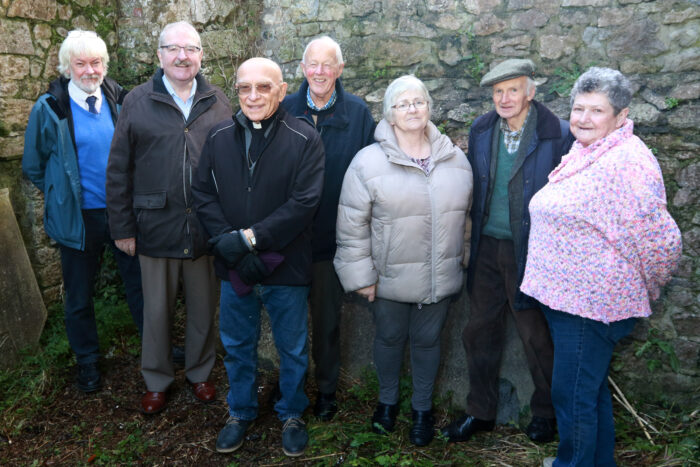
“Somebody was putting their finger down, as I understand it, and discovered an inscription. So they were put up against the wall then,” Anthony explains.
“I don’t think there’s any date on the Ten Commandments. The one thing I would love to know, and ye are all experts, how do you clean inscriptions on a headstone?” Anthony addressed the gathered flock.
“You don’t clean them,” answered Carmel Ryan, vice chairperson of Askeaton Civic Trust insists.
“A drop of vinegar would help,” Kevin offers.
“No that’s acidic,” he is told.
“You are not to use that,” Anthony chimes in.
“Shaving foam,” the veteran councillor bounces back to a short silence.
“The plan is to get a preservation order to make sure that nobody goes at them with any kind of a chemical,” Carmel tells me.
“Somebody would be stupid enough to go at them with a wire brush,” Kevin expertly professes.
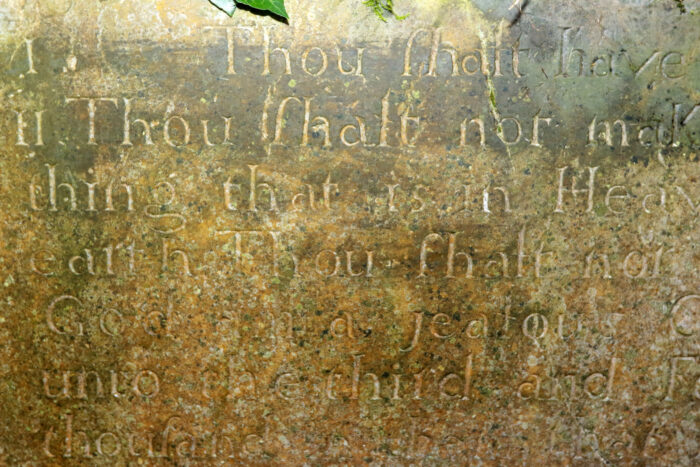
A significant find
Saving the day, US-native Rev Canon Dennis Kezar, who looks after the liturgical and pastoral needs of the parishes in the West Limerick area, catches up with the gathering.
A little stunned to see the excited gaggle of devotees waiting his arrival, he offers a warm and friendly smile and ushers his congregation towards the back of the church where the Commandments are to be found.
Formerly a Catholic Church, the beautiful site on which St Mary’s sits is steeped in a history that whispers its secrets from every direction. It is a peaceful and truly captivating space.
Dating back to the Knights Templar, the church was originally located at the nearby Franciscan Abbey before it was destroyed in 1847. The church that stands in the town today was built in 1851.
In the present day, Cllr Kevin Sheahan is holding court.
“The last Protestant rector who was here told me that he was satisfied that there were two churches under this one,” he says.
“I think these slabs are a significant find, “Anthony cuts in on cue.
“Normally this gate would be open, but the problem is young people were coming in and using it as a toilet.”
At this point, before shaving foam or sandpaper can be doffed, another character arrives to our cast. With his fine white bristles, Limerick City and County Council’s Conservation Officer, Tom Cassidy, has also answered Cllr Sheahan’s call to the top of the Mount.
“When did you carve this?” he asks Kevin with a wry grin. “Nobody used any Parazone to clean it I hope?”
Tour guide Anthony wants to know if Tom would be against grass as a cleaning tool.
“I am not against grass to bring up the lettering,” he replies, which Anthony takes as his cue “to get a bit”.
“A bit,” says Tom, “you’d need half an acre.”
But Anthony has gone, fully convinced the green gold will “brighten the Commandments up a small bit”.
Mr Cassidy tells our congregation that the giant headstones would originally have been inside in the church with an ornate frame around them.
By this point 82-year-old Anthony is going fairly hard at it on the two stones with his fistfuls of grass.
I suggest to Cllr Sheahan that it might be no harm to bring the tablets with him into the council chamber for some of his colleagues to take stock of.
“There’s a couple of fellas I would put under the stones,” he confesses.
All jokes aside, Cllr Sheahan deems the two stones a “fantastic find”.
“Every time we move a stone in Askeaton, I have said it publicly, you disturb a piece of history, and there’s plenty of it on this site.”
Before I take my leave, I can’t resist but ask Kevin which commandment councillors would fall most foul of.
“Well, there isn’t any commandment that says thou shalt not tell a lie, but it should be the eleventh,” he says with a big belly laugh.
At the end of the day, aren’t we all sinners? And, as Mae West once said, “to err is human – but it feels divine.”
Some time after my visit to St Mary’s Church, Askeaton Civic Trust came back to me with some new findings.
They discovered that the stones, inscribed with the creed, commandments, and Lord’s prayer, were erected by Richard Taylor in memory of his son Robert, who died in May 1726, and his wife Mary, who died in December 1730.





